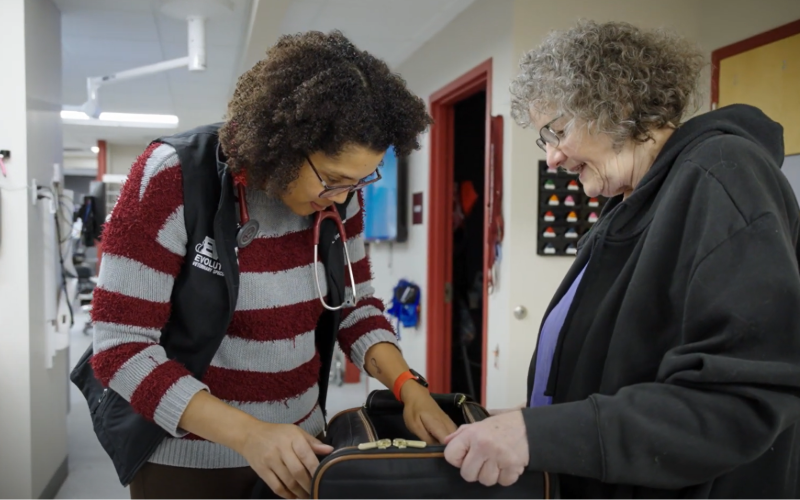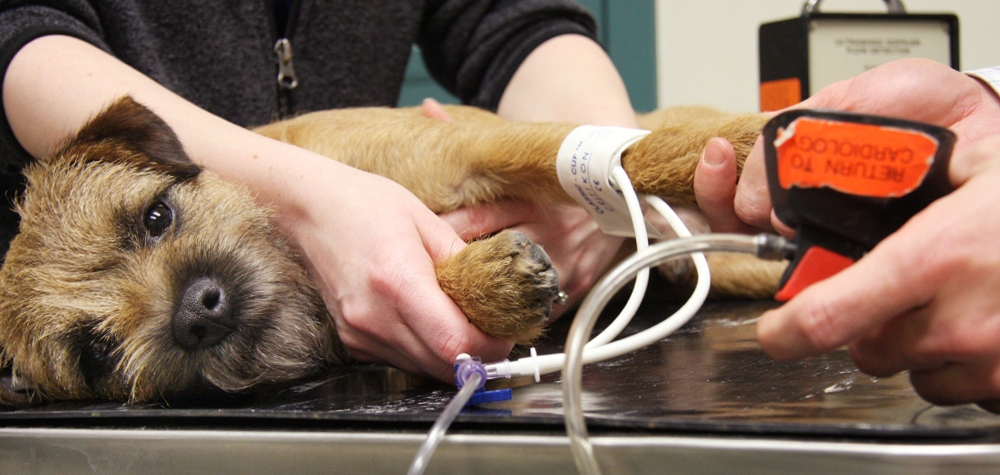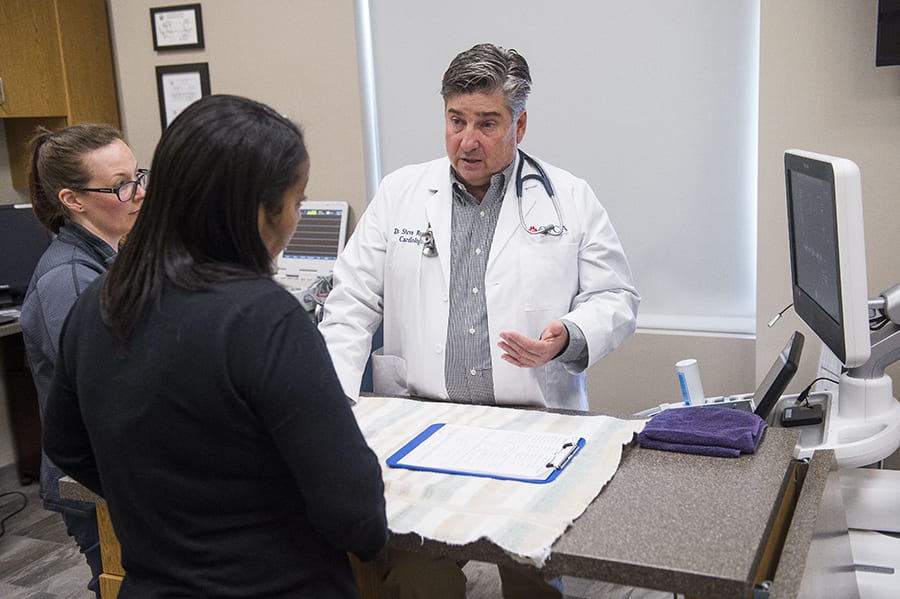FAQs About Visiting a Cancer Veterinary Near Me}
Wiki Article
What You Need to Know About Veterinary Solutions: An Overview of Diagnostic Equipments and Procedures
Veterinary solutions play a crucial duty in maintaining the wellness of pets. Normal exams can disclose concealed health and wellness issues early. Various analysis devices and procedures, such as blood examinations and imaging techniques, offer essential understandings into an animal's wellness. Understanding these approaches is key for family pet owners. What specific analysis treatments are most generally used, and just how can they impact an animal's therapy strategy?Significance of Regular Vet Check-Ups
While many pet owners might underestimate the importance of regular vet check-ups, these appointments are essential for preserving a pet's total health. Regular sees to the vet allow for very early detection of prospective health and wellness concerns prior to they rise right into severe issues. Routine examinations typically consist of vaccinations, which are necessary for avoiding transmittable diseases that could seriously influence a pet's well-being. In addition, these consultations offer an opportunity for veterinarians to examine the animal's weight, dental health and wellness, and overall problem, making sure that the pet dog is thriving. Throughout these visits, pet owners can also get important advice on diet, exercise, and precautionary treatment tailored to their certain pet's requirements.Usual Analysis Procedures in Veterinary Medicine
In vet medication, precise medical diagnosis is essential for effective treatment. Usual analysis treatments include blood screening techniques, advanced imaging modern technologies, and urinalysis, each playing a significant role in recognizing health concerns. Understanding these techniques enhances the capability to give ideal look after pet individuals.Blood Testing Strategies
Blood testing strategies work as necessary diagnostic tools in vet medicine, enabling veterinarians to analyze the health of animals accurately. These strategies entail collecting blood samples to assess various components, such as red and white blood cells, platelets, and biochemical pens. Usual examinations include total blood counts (CBC), which assess general health and wellness and identify infections, and biochemical panels, which examine body organ feature and metabolic standing. Furthermore, serological examinations can identify certain diseases via antibody discovery. Blood testing is minimally intrusive and provides important information that assists in identifying problems, checking health condition, and examining actions to therapies. Overall, these methods play an essential function in making sure suitable care for pet dogs and livestock alike.Imaging Technologies Made Use Of
Diagnostic imaging modern technologies are essential tools in vet medicine, complementing blood testing strategies by providing aesthetic insights into an animal's internal structures. Typical imaging modalities consist of X-rays, which serve for reviewing bone fractures and spotting international objects, and ultrasound, which permits real-time visualization of soft tissues and body organs. Magnetic vibration imaging (MRI) offers in-depth photos of complicated physiological locations, specifically in neurological analyses. Computed tomography (CT) supplies cross-sectional images, improving analysis accuracy for various conditions. Each of these technologies aids veterinarians in identifying illnesses, preparing treatments, and keeping an eye on recovery. By including imaging modern technologies, vet experts can much better evaluate a pet's wellness and make notified decisions regarding their care.
Urinalysis and Diagnostics
Urinalysis serves as a crucial diagnostic tool in veterinary medication, giving beneficial insights right into a pet's general health and aiding in the discovery of different problems. This non-invasive procedure analyzes urine samples to analyze kidney feature, hydration standing, and metabolic problems. Common components examined include certain gravity, pH levels, sugar, healthy proteins, and the visibility of blood or bacteria. Irregular searchings for can suggest concerns such as urinary system system infections, diabetic issues mellitus, or kidney condition. To enhance diagnostic accuracy, urinalysis is usually carried out in combination with various other tests, such as blood job and imaging studies. Early discovery with urinalysis can cause timely interventions, improving the prognosis for many veterinary clients. Therefore, it is a necessary aspect of extensive vet treatment.Recognizing Blood Tests and Laboratory Evaluation
Recognizing blood examinations and research laboratory analysis is important in veterinary medicine as it assists in identifying different health conditions in animals. Different sorts of blood tests give necessary information concerning an animal's interior state, while translating laboratory results calls for careful consideration of various factors. This area will check out the sorts of blood examinations available and the significance of their results.Sorts Of Blood Examinations
Blood examinations play an important function in vet medicine, giving necessary understandings into an animal's health and wellness status. Different sorts of blood examinations are used, each serving different functions. Total blood counts (CBC) evaluate overall health and wellness and spot conditions such as anemia or infection. Biochemical profiles evaluate body organ feature by gauging enzymes and electrolytes, offering insights right into metabolic health. Serological examinations recognize details antibodies or virus, assisting in the diagnosis of infections or autoimmune diseases. Blood typing guarantees safe transfusions, while coagulation examinations assess the blood's ability to clot, vital for surgical procedures. These examinations jointly enhance medical diagnosis, treatment planning, and monitoring of a pet's wellness, highlighting the significance of detailed laboratory evaluation in vet treatment.
Interpreting Laboratory Outcomes
A complete evaluation of laboratory results is crucial for accurate diagnosis and treatment in vet medicine. Translating lab results calls for an understanding of normal referral ranges and the significance of inconsistencies. Blood tests can expose various wellness indications, such as body organ function, electrolyte equilibrium, and the visibility of infections. Veterinarians have to think about the entire medical picture, including the animal's history, physical exam findings, and any type of symptoms presented. Variants in results may emerge from factors such as age, breed, and underlying wellness problems. As a result, lab results must not be watched alone however rather as part of an all-encompassing analysis strategy. Precise interpretation enables for tailored treatment plans and far better results for vet people.Imaging Techniques: X-rays, Ultrasounds, and Beyond
Imaging techniques are essential devices in veterinary medication, giving vital understandings right into the health and wellness and wellness of pets. Amongst one of the most commonly utilized methods are Ultrasounds and x-rays. X-rays are vital for envisioning bone structures, assisting additional hints vets identify fractures, lumps, or international items. This method is non-invasive and fast, making it ideal for urgent situations.Ultrasounds, on the various other hand, make use of sound waves to develop photos of soft cells and body organs. This strategy is specifically valuable for analyzing the heart, abdominal area, and reproductive body organs, allowing vets to assess conditions like liquid buildup or organ abnormalities.Beyond X-rays and ultrasounds, advanced imaging techniques such as computed tomography (CT) and magnetic vibration imaging (MRI) are significantly made use of in veterinary practice. These approaches supply comprehensive cross-sectional images, improving the precision of medical diagnoses and therapy plans. Ultrasound For Dogs. On the whole, imaging methods play a necessary function in making sure efficient veterinary treatmentThe Duty of Biopsies in Diagnosing Family Pet Health And Wellness Issues
Precision in diagnosing wellness problems in family pets often depends upon the usage of biopsies, which give conclusive details about tissue abnormalities. A biopsy entails the removal of a small example of tissue for assessment under a microscopic lense, permitting veterinarians to determine different problems, consisting of infections, tumors, and inflammatory illness. This diagnostic tool is crucial for distinguishing in between deadly and benign growths, leading treatment choices, and assessing the severity of a condition.Biopsies can be done using various methods, such as needle aspiration, incisional biopsies, or excisional biopsies, depending on the area and sort of tissue entailed. The choice of approach might influence recovery time and the quantity of tissue collected. Eventually, the info amassed from a biopsy can bring about targeted therapies, improving outcomes for animals dealing with major health and wellness obstacles. Vets emphasize the relevance of this procedure in accomplishing precise diagnoses and effective therapy plans.Advanced Diagnostic Devices: Endoscopy and CT Checks

Advanced analysis tools, such as endoscopy and CT scans, play a crucial duty in contemporary vet medication, providing non-invasive approaches to imagine internal frameworks and diagnose numerous problems in animals. Endoscopy entails using a flexible tube outfitted with a video camera, allowing vets to examine the intestinal system and respiratory system directly. This strategy can expose abnormalities such as tumors, international bodies, or inflammation, enabling targeted therapy plans.CT scans, on the other hand, make use of sophisticated imaging technology to create detailed cross-sectional pictures of the body (CT Scans For Dogs). This technique is especially valuable for assessing complex frameworks like the brain, spinal column, and joints. By supplying high-resolution pictures, CT scans aid veterinarians in determining problems that may not be obvious through traditional radiography. Together, these advanced devices enhance analysis accuracy, improve therapy outcomes, and eventually add to far better general family pet health and wellness management

Interpreting Test Outcomes: What Family Pet Owners Ought To Know
Recognizing test outcomes can be a tough job for family pet proprietors, especially after sophisticated procedures like endoscopy and CT scans have been carried out. Analyzing these outcomes needs an understanding of clinical terminology and a clear understanding of what the searchings for show regarding the pet's health and wellness. Vets frequently provide explanations, but the complexity of the outcomes can still bring about confusion.Pet owners need to actively participate in discussions with their veterinarians, asking inquiries to make clear any kind of unpredictabilities. It is vital to comprehend abnormal versus more info here typical results and the effects for the animal's therapy plan. Additionally, identifying that some results might call for more screening or tracking can help proprietors remain informed concerning their animal's wellness journey. Eventually, a collective method in between family pet owners and veterinary experts fosters better health outcomes and boosts the overall care experience for family pets.Frequently Asked Inquiries
How Do I Choose the Right Vet Facility for My Family pet?
Choosing the right vet facility includes looking into local choices, assessing credentials, visiting facilities, and assessing personnel communications (CT Scans For Animals). Focusing on recommendations from trusted resources can aid assure the most effective care and setting for a pet dog's wellness requirementsWhat Should I Do if My Pet Refuses to visit the Vet?
When a family pet refuses to go to the veterinarian, it's a good idea to stay calm, use treats or toys to tempt them, and take into consideration setting up a home visit if anxiety lingers. Perseverance and favorable reinforcement are crucial.Are There Telehealth Options for Vet Services?
Telehealth alternatives for veterinary services are increasingly available, permitting pet dog proprietors to seek advice from vets remotely. These solutions allow discussions regarding health issues, guidance on small disorders, and follow-ups without needing to see a facility.
Just how Commonly Should My Family Pet Have Oral Examinations?
The regularity of oral check-ups for pets normally relies on their age and breed. Generally, vets recommend annual dental assessments, although some pets might require more constant visits to keep optimal oral wellness.
What Are the Prices Connected With Vet Diagnostics?
The expenses related to veterinary diagnostics can vary commonly, commonly varying from basic examinations like blood work to sophisticated imaging techniques. Aspects influencing costs include the facility's location, tools utilized, and particular examinations required for each pet dog. Vet services play a crucial duty in keeping the health of animals. While lots of pet owners may undervalue the importance of routine vet check-ups, these appointments are necessary for maintaining an animal's overall health and wellness. Additionally, these visits supply a possibility for veterinarians go to my blog to assess the pet's weight, dental health, and total condition, making sure that the family pet is prospering. Accuracy in diagnosing health and wellness concerns in animals often hinges on the usage of biopsies, which give conclusive information concerning tissue abnormalities. Furthermore, recognizing that some outcomes may call for additional screening or monitoring can help owners stay notified about their family pet's health journey.Report this wiki page